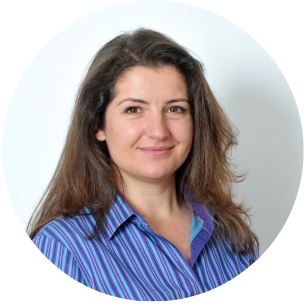Having amended PAGB’s Articles of Association by way of special resolutions to expand the definition of “Industry” to include self care medical devices, regulatory work on this new category started in earnest in 2015. It had two strands which ran side by side. Firstly, the development of an advertising guideline; and secondly to ensure appropriate regulation under the forthcoming legislation. A key milestone in the latter was a PAGB meeting with MEP and rapporteur for the Medical Devices Regulation, Dame Glenys Willmott.
A specific working group was set up to develop an advertising guideline for medical devices. For the sake of consistency across membership categories, the PAGB Consumer Code for Medicines was used as a starting point with input from the working group and external experts to support its development.
In April 2016, PAGB ran a members’ seminar with speakers from Neprofarm and Keuringsraad who shared lessons learned and successes of self regulation for self care medical devices in the Netherlands. MHRA (Medicines and Healthcare products Regulatory Agency) representatives also spoke at the event.
The Medical Devices Guideline was piloted across three product categories before the Copy Clearance team started to accept copy for approval in 2016. We took a staged approach to the implementation, and each product category was given a three-month voluntary period to start bringing copy in line before submission and approval became mandatory.
However, as the new process came into effect, Members found that the Medical Devices Guideline and its application did not adequately reflect the differences between the regulatory regimes for medicines and medical devices and the process of compulsory copy clearance was not optimal. The process was, therefore, reviewed and the Board decided to revisit the scope of the services that PAGB offered to its members for medical devices.
In March 2018, PAGB’s Advertising Working Group started a project to review the scope and content of the Medical Devices Guideline and the advertising services offered by PAGB in relation to medical devices. Its goal was to find a solution which allowed industry to maintain its commitment to self regulation with a system appropriate to the medical devices regulatory landscape, whilst allowing PAGB to support its members in creating compliant advertising.
A key part of the work was ensuring that the full membership was aware of the work and had the chance contribute to it. All PAGB members were invited to input through a variety of routes, including member working groups, newsletters and direct invitations.
A subgroup of the Advertising Working Group was convened to review the feedback received in detail and to discuss solutions. It was agreed that a new Medical Devices Consumer Code should be developed. PAGB also met with the MHRA to ensure that the Agency was on board with the proposed change in approach.
Following adoption by the full membership at the AGM on 27 September 2018, the Medical Devices Consumer Code (MDCC) came into force on 2 January 2019. The Code includes a requirement that member companies have a named person responsible for establishing and maintaining a process to ensure medical devices advertising complies with the MDCC. The inter-member complaints process applies to everything covered by the new Code so members can ask PAGB to intervene. A highlight of the project was PAGB’s being invited to MHRA to share the outcome and new approach with the wider industry.
So, what next for medical devices? PAGB’s five training workshops on the MDCC were very well attended and several members have already booked additional onsite training. This shows that the membership is committed to complying with the new Code. PAGB will continue to provide support to members as required and, importantly, will continue to seek collaboration with MHRA and the ASA to ensure that those who have signed up to best practice principles are not disadvantaged, and that regulatory action is proportionate.
Meanwhile from a broader regulatory perspective, using the expertise of the Medical Devices Regulatory Working Group, PAGB will continue to assess the potential impacts of the new legislation in the countdown to the implementation of the Medical Device Regulation. This will include working with our European colleagues at AESGP, the Association of the European Self-Medication Industry, keeping in touch with notified bodies and responding to the impact of EU Exit.



